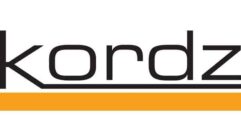
Get the Job, Part 1
Apr 6, 2010 12:00 PM,
By Don Kreski
Thoughts on the science of writing winning proposals.

Understanding how to respond to requests for proposals helped Stage Front Presentation Systems, a USAV Group member, land this installation for the Asbury Memorial United Methodist Church in Savannah, Ga.
Photo by Lyndi J. Haja of Stage Front Presentation Systems
There’s an art and a science to writing winning proposals.
The science will help you make sure the document you submit will realistically describe what you plan to do, sets a profitable price on your work, and protects you from unreasonable or unanticipated demands and issues.
The art can help you to make the case that you are, in fact, the best contractor to do the job, worth hiring over others who bid the same price or a lower price to complete the work.
To help you optimize both sides of the equation, I recently spoke to three industry experts on the process of answering requests for proposal (RFPs): K.C. Schwarz, founder and CEO of the Northglenn, Colo.-based buying and integration consortium USAV Group; Pete Dugas, CEO of Atlanta-based integration and consulting firm TSAV; and Jeff Loether, president of Gaithersburg, Md.-based consulting firm Electro-Media Design.
The science: preparing a response
Schwarz, whose background includes work on multibillion-dollar proposals for the defense industry, says that as a first step, you need to consider the proposal an integral part of the project itself. For Schwarz, that means two things: 1) that the person writing the proposal has a clear understanding of the company’s ability to deliver the work, and 2) that there’s a methodology in place to make sure that the company has the resources to profitably complete the jobs it wins.
“There’s a sacred triad of project management,” he says. “Scope, schedule, and resources. What’s the scope, what’s the schedule, and what are the resources required to do it?”
Dugas, whose company builds higher-end AV systems in the United States and overseas, agrees. “A lot of factors go into the decision to bid,” he says. “The biggest one is understanding your capacities. At TSAV, we’re looking for projects that hit our sweet spot in terms of logistics, timeline, technology, and availability of people.” When they do, he says he’s not too worried about the margin he gets when he wins the bid. The profit is generally there.
Both Schwarz and Dugas agree that many of the RFPs they see are well-written, with requirements defined by an AV consultant or an educated owner. “If that’s the case, your first priority is to answer the questions and provide what’s required,” Dugas says.
But there are times when the RFP is not complete or correct. “You have to do some kind of requirements or design review on every bid,” Schwarz says. If you find flaws, you may add details about what you plan to provide, propose an alternative, or choose not to bid.
“Of course, if we find the RFP is incomplete and we’re not comfortable bidding it as written, that’s more of a challenge,” Dugas says. You not only need to supply what’s missing, but find a diplomatic way to do so.
These flaws can exist in any number of areas. “It’s our responsibility, in many cases, to train the client in what they have to plan for,” Dugas says. “We need access. We need a loading dock. We need the space to be heated or air conditioned for a certain amount of time before we get there. We have to specify what the electrical contractor will provide, what the voice contractor will provide, which ports will be open on the firewalls.”
Get the Job, Part 1
Apr 6, 2010 12:00 PM,
By Don Kreski
Thoughts on the science of writing winning proposals.
Loether, who was one of the authors of InfoComm’s Audiovisual Best Practices, says he doesn’t believe many consultants are offended by integrators who add qualifications or conditions to their bids. “A crucial factor for us is responsiveness; that is, the willingness to follow the directives and specifications in the RFP,” he says. If it’s apparent that you’re working to better the project, bringing up a missing item is a good thing. “I need a team player,” Loether adds. “I don’t want to be in a superior/subordinate relationship. I think the contractor and design consultant should be working together to benefit the client.”
While it’s true that some consultants are less accommodating, overlooking a missing spec can have serious consequences. “In a way, you’re betting your company on every big proposal,” Schwarz says. For that reason, you want to keep management involved. “Everyone has, at minimum, an informal approval process, but to be successful, you need more discipline.”
Dugas agrees. “We have a different model than most AV integrators,” he says. At TSAV, one or more sales people and engineers work on every proposal, and at least one member of the management team reviews it before it goes out.
Related Links

You can use LinkedIn to grow your client base, but the way it works is subtle…

great opportunity for AV integrators to post videos about their installations….

As important as electronic media have become to most companies, there’s still a lot of value in a printed brochure…

Last month, we looked at the science of responding to requests for proposal (RFPs): the processes you must go through to ensure that your proposals realistically describe what you plan to do, set a profitable price on your work, and protect you from unexpected demands and issues…
If the RFP does not already do so, Schwarz suggests breaking the project down not only by functional segments such as video, sound, or control, but by timing segments or milestones. These may include, for example, completion of engineering documents, delivery of equipment, and completion of programming. “Each of these milestones has to be something tangible that everyone can agree on, something you can test and ask the customer to sign off on,” he says. Thinking in these terms can help you define the skills and resources needed to complete each phase of the project, help you keep the project on track once it has begun, and define points for progress billing.
“Another way to look at this is to create a schedule of values, where you define different segments of the job, the material and labor, and then bill when you reach certain percentages of completion,” Dugas says. Though you see these mainly on larger projects following the American Institute of Architects (AIA)’s guidelines for process management, Dugas says this type of planning is a part of every large project at TSAV.
“[If you don’t consider these kind of details,] you will find yourself asking your techs for heroic efforts during the installation,” Schwarz says. “‘We didn’t know we were going to have to do this, but we’ll just have to whip our techs to work from 10 p.m. to 5 a.m., because we can’t get access during the day.'”
Dugas adds that, in many cases, “this is simple stuff, but we have to spell it out. We’re the AV pros, after all. The client often is not.”
When it comes to pricing the job, Schwarz suggests borrowing a method from government contractors called cost Basis of Estimate, or BOE. “The idea is to base your pricing on an historical database of past jobs,” he says. “How long does it actually take your people to hang a projector?”
“Forensics is a big thing,” Dugas says. “We routinely hold project closeout meetings and financial debriefings.” Who the other bidders are is also important. One of the companies I used to work for kept very careful records of who won each bid and, as much as possible, calculated the markups they used.
“I suspect there’s a definite correlation between the dealers who try to collect that type of information and those who are most profitable,” Schwarz says.
In the end, what’s most important to the person who will open your proposal? “Qualification is first,” Loether says. “And next, it’s responsiveness. Does the bidder show an understanding of the project and echo the priorities expressed in the RFP? Are any conditions or exceptions done in the spirit of wanting to help things, to benefit the client?” Price is very important, Loether says, but only after he’s sure he has bidders who are qualified and responsive.
The science of preparing a bid, at least as we’ve defined it so far, has everything to do with responsiveness and price. The art, showing that you are well qualified to complete the project, is our topic for next month’s “Marketing Mix.”
Don Kreski is the president of Kreski Marketing Consultants, which offers marketing services to the AV industry. You can reach him at www.kreski.com/contact.html.
Continue to Get the Job, Part 2










